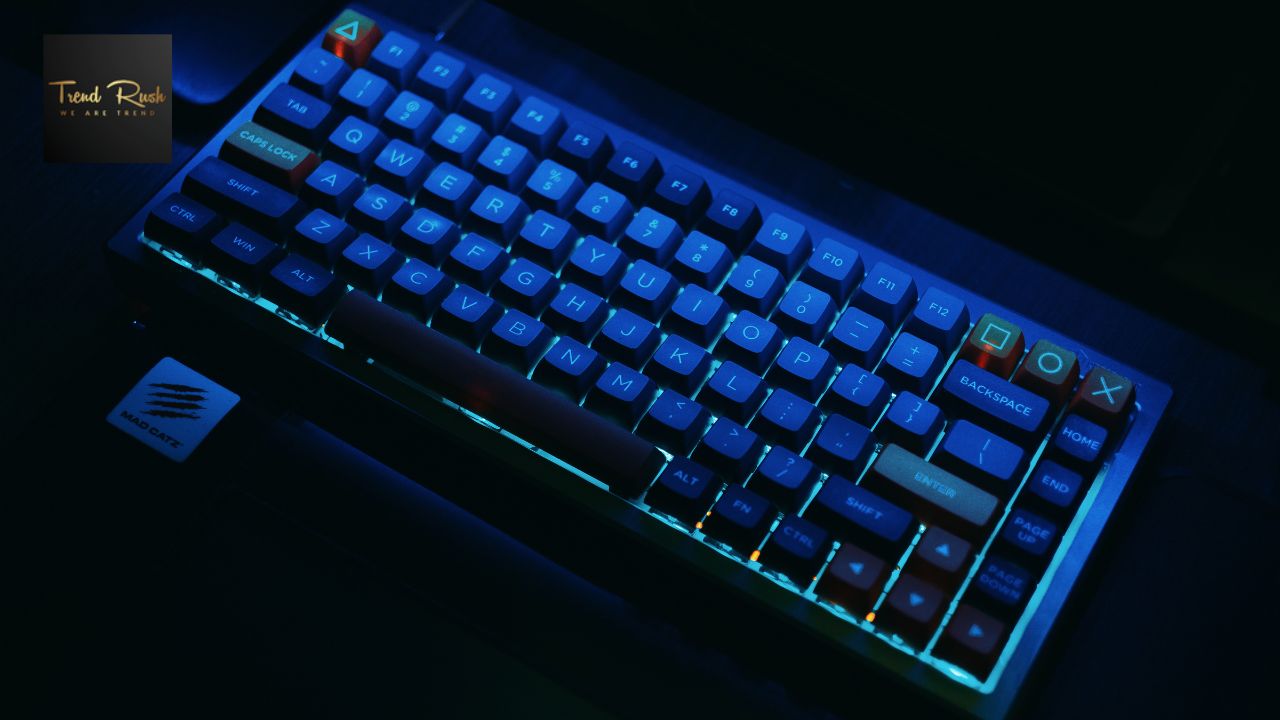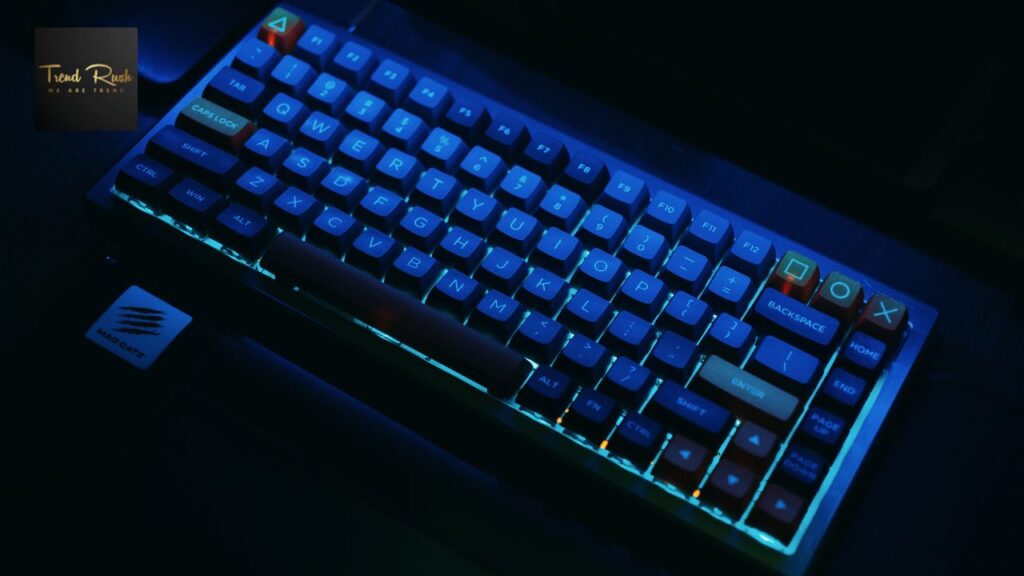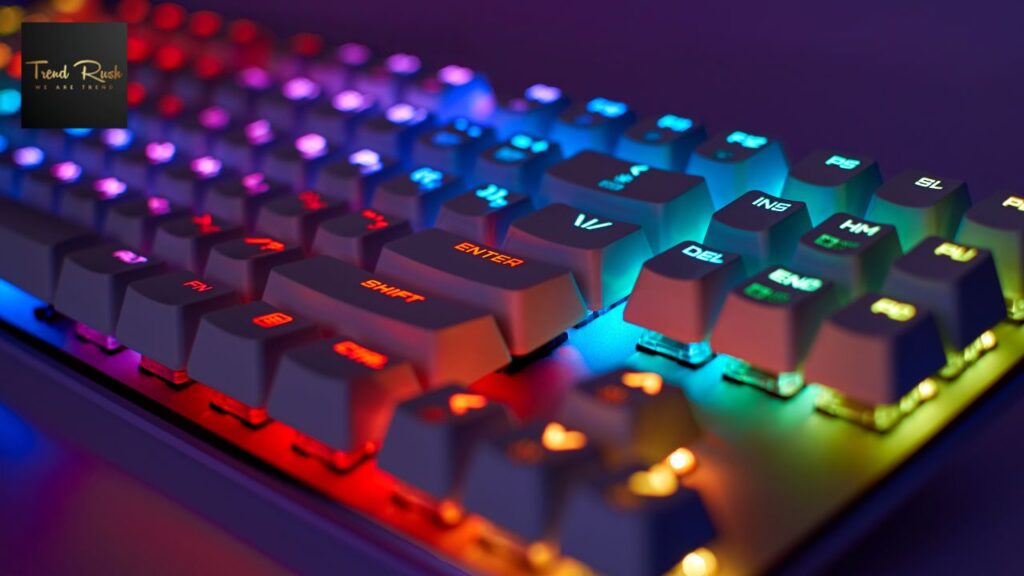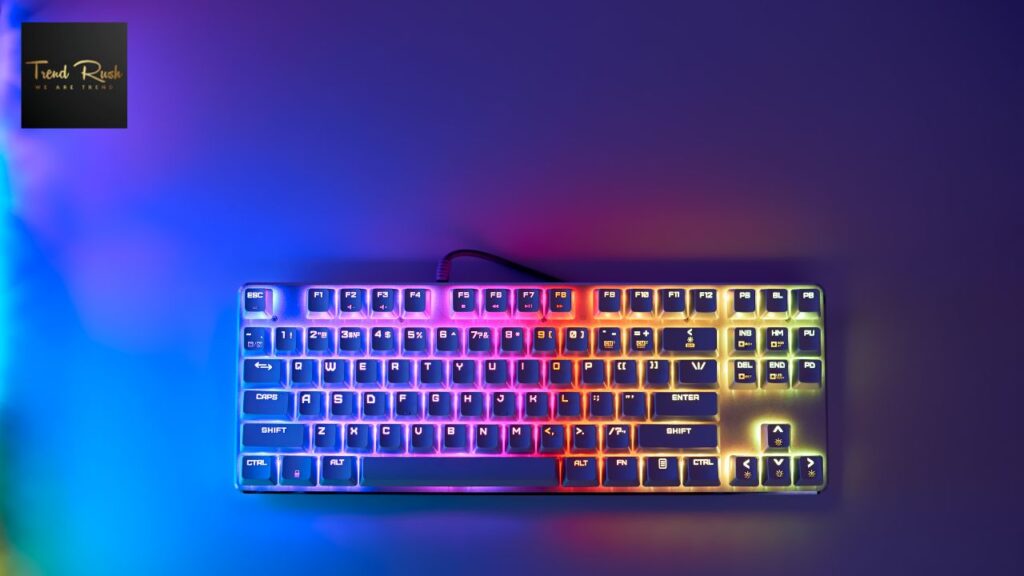Physical Address
304 North Cardinal St.
Dorchester Center, MA 02124
Physical Address
304 North Cardinal St.
Dorchester Center, MA 02124


Ever thought your keyboard might be slowing you down in games or typing? Low latency keyboards are all the rage, claiming super-fast response times. But are these claims true, or just marketing tricks? In today’s fast-paced world, knowing the truth about these keyboards is key.
This article will explore the world of low input lag keyboards. We’ll find out what’s real and what’s not. It’s important for gamers and typists to understand the difference.

Latency is key in how fast your keyboard works. It’s about how quickly your keystrokes show up on your screen. Whether you’re typing fast for work or gaming, knowing about latency helps you choose the right keyboard.
Latency is the time it takes for a key press to show up on your device. It’s measured in milliseconds. For gamers and fast typers, a low latency keyboard is a must. It makes your actions feel quicker.
Wireless keyboards can have more latency due to wireless issues. However, some use 2.4GHz connections, which are faster than Bluetooth and can offer a better experience. If you’re looking for the lowest latency keyboard, those with 2.4GHz wireless connections are typically more responsive than Bluetooth models.
Several things affect keyboard latency. It’s important to consider these when picking your keyboard. These include:

A low latency keyboard is made to register key presses quickly. This makes your gaming and typing better. These keyboards have a latency of about 1ms, perfect for competitive gamers who need fast and precise control.
Every millisecond matters in games. A low latency keyboard can be the difference between winning and losing.
Low latency in keyboards means how fast key presses are recognized and sent to your computer. Gaming keyboards with low latency often have polling rates of 8000Hz. This cuts down the response time to just 0.125 ms.
Models like the NuPhy Field75 HE and Wooting 80HE are great examples. They use advanced switch technology to reduce delays when you press a key.
For gamers, low latency is very important. It helps them react quickly in fast-paced games. High-latency keyboards can slow them down, leading to missed chances or delayed actions.
A gaming keyboard with low latency also improves your typing speed and accuracy. It’s not just for gaming but for everyday tasks too. Choosing the right keyboard can give you the edge you need.
Knowing what affects latency is key to picking the right keyboard. Things like switch actuation, polling rates, and connection types matter a lot. A fast keyboard can really improve your gaming and typing. Let’s dive into these important factors.
Switch actuation is how a keyboard knows when you’ve pressed a key. Mechanical switches, like linear ones, act fast. This makes them great for quick responses.
Lower debounce times mean keys are registered faster. This is super helpful for those who need a quick keyboard. It makes typing and gaming smoother.
Polling rates show how often a keyboard talks to your computer. It’s measured in Hz and affects latency. For example, 1000 Hz means it polls every millisecond, with just 1 ms latency.
But, 125 Hz can lead to up to 8 ms latency. Here’s a table showing how different polling rates affect response times:
| Polling Rate (Hz) | Keypress Response Time (ms) |
|---|---|
| 125 | 8 |
| 250 | 4 |
| 500 | 2 |
| 1000 | 1 |
| 2000 | 0.5 |
| 4000 | 0.25 |
The connection between your keyboard and computer affects latency. Wired connections are usually better than wireless because they send data straight away. For example, a wired keyboard on a USB 3.0 port can send data at up to 5 Gbps.
On the other hand, wireless keyboards might face interference and delays. This can make them slower than wired ones.
A low input lag keyboard works well because of its internal parts. The type of switches and polling rate are key. An ultra-responsive keyboard uses mechanical switches, which are better than other types.
Gateron switches, found in top models like the Keychron Q5 Max, are great for fast typing and gaming. They allow for quick and smooth actions, perfect for fast games.
Mechanical switches are a favorite for gamers and typists. They need less force to actuate, making inputs quicker. This is great for fast games.
Many keyboards have membrane switches, but they can’t match mechanical switches. Gamers often choose linear switches, like Cherry MX Speed, for their fast actuation and low resistance.
Polling rates affect how well a keyboard responds to user actions. A 1000 Hz polling rate means the keyboard updates every millisecond. This is key for reducing lag.
Keychron keyboards, like the Q5 Max, have this rate in both wired and wireless modes. Wired connections are best because they almost eliminate lag. This means your commands are done right away.
Switching to a low latency keyboard can change your gaming and work life. These keyboards are designed to improve your experience. You’ll see better gaming and typing performance.
Low latency keyboards are great for fast games. They can cut down input lag to just 1 millisecond. This small change makes a big difference in how quickly you react.
Studies show gamers can react up to 30% faster. A survey found 85% of pro gamers saw their skills improve with these keyboards. This means you can make quicker decisions and win more games.
Low latency keyboards also boost your typing speed and accuracy. You can type up to 20% faster. This makes writing emails or reports smoother.
Typing tests show a 15% improvement in accuracy. This means your work will be more precise and fun. Graphic designers and writers will see big improvements in their work.
For serious gaming, the right tools are key. A low latency gaming keyboard boosts your gameplay with quicker reactions. Many models excel, with features made just for gamers. Here are some top low latency keyboards on the market.
Many gaming keyboards are fast and have low latency. These models have great specs and performance:
| Keyboard Model | Price | Polling Rate | Switch Type | Key Count |
|---|---|---|---|---|
| Wooting 60HE+ | $199.00 | Up to 8000Hz | Mechanical | 60 |
| NuPhy Field75 HE | $139.99 | 1000Hz | Optical | 75 |
| Razer BlackWidow V4 Pro | $229.99 | Up to 8000Hz | Razer Linear | 109 |
| Logitech G Pro X TKL | $159.99 | 1000Hz | Mechanical | 87 |
| HyperX Alloy Origins 60 | $109.99 | 1000Hz | Mechanical | 60 |
When picking a low latency keyboard, look for features that boost gaming:
By focusing on these features, you’ll find a keyboard that fits your gaming style. The right keyboard can greatly improve your gaming, giving you an edge over others.
Deciding if low latency keyboards are worth the cost requires a detailed cost vs. performance analysis. These keyboards offer big improvements in user experience, which is great for gamers and professionals. It’s important to weigh the price against the benefits before deciding.
Low delay keyboards are pricier than regular ones. This is because they use advanced tech to cut down on response time and boost performance. For example, mechanical gaming keyboards can have latencies as low as 1ms. But, actual latency depends on many factors, like how fast the computer processes data.
| Polling Rate (Hz) | Response Time (ms) | Typical Use Case |
|---|---|---|
| 125 | 8 | Standard Office Use |
| 250 | 4 | Casual Typing |
| 500 | 2 | Light Gaming |
| 1000 | 1 | Competitive Gaming |
| 2000 | 0.5 | High-Performance Scenarios |
| 4000 | 0.25 | Professional Gamers |
For instance, keyboards with a 1000 Hz polling rate, like the Hexgears, have an average latency of 0.5 ms over a wired connection. This is much faster than keyboards with lower polling rates. So, these keyboards are a good choice for serious users.
Using low latency keyboards is a different experience than standard ones. They have faster response times and smoother operation. This is very beneficial in gaming, where quick reactions are key. If you need better performance, investing in a low delay keyboard might be a good choice.
Many people think latency in keyboards is simple, mainly tied to polling rates. This leads to polling rate myths that don’t show how delays really affect us. It’s key to know these myths to understand input lag’s true impact on gaming and typing.
Some believe mechanical keyboards always beat membrane keyboards in speed. But, the real difference depends on many things. A high polling rate, like 1000Hz, means data is sent every millisecond. Yet, in everyday use, the difference might not be big.
Input lag isn’t just from the keyboard. Your operating system, game software, and graphics card also play big roles. They all affect how fast your system responds.
The real-world impact of latency is clear in fast games. Even a keyboard with little delay can feel slow if the whole system is slow. Wireless keyboards used to have bad lag, but now it’s almost gone for everyday use.
Many gamers don’t notice lag in casual games. But in competitive games, even a small delay can be a big deal.
Monitor refresh rates make visuals smoother but don’t change how fast your keyboard talks to your system. Your system’s overall performance, including background tasks, affects lag too. Keeping your software and hardware up to date helps your keyboard work better. Knowing this helps you choose the right keyboard for you.
Choosing the right low latency keyboard is all about knowing what you need. Think about how intense your gaming is, your typing habits, and your budget. Low latency keyboards come with features for different needs, from gaming to casual typing. It’s important to pick one that fits your personal needs best.
First, figure out what you need from a keyboard. If you’re into competitive gaming, a low latency keyboard is key. It helps you react faster and reduces lag. For those who type a lot, look for a keyboard that’s comfortable and ergonomic, too.
Also, consider how you connect your keyboard. Wired keyboards usually have the lowest latency, around 0.5 ms. Wireless keyboards are handy but might have more lag. If you want the best performance, go for a wired option.
Here are some top picks for different needs:
Choosing the right low latency keyboard means finding one that meets your needs. Research well and pick a model that suits your preferences. This will greatly improve your gaming or typing experience.
Keeping your low latency keyboard in top shape is key. It not only makes it last longer but also works better during long gaming or typing sessions. By following simple care steps, you can spot problems early and fix them fast.
Keeping your keyboard in check can really boost its speed. Here are some tips to make your keyboard work its best:
Watch out for these signs that your keyboard might need some TLC or a new one:
The future of low latency keyboards is exciting. It combines new tech with what users want. Gamers and typists will see big improvements in their typing.
Speed and how fast you can react are key. So is making keyboards fit each user’s needs.
New keyboard designs focus on better performance. Switch tech lets users change their keyboard to fit their style. Wireless keyboards are getting better, making them fast and easy to use.
RGB lights and software for customizing add to the appeal. They mix function with fashion.
The market for low latency keyboards is growing fast. It’s expected to hit US$ 2.82 billion by 2029. This is a big jump from 2024.
North America is leading, thanks to gamers. But Asia Pacific is catching up fast. People want keyboards that are comfy, perform well, and can be customized.
They also want different prices. This pushes makers to keep making new and better keyboards.
Low latency keyboards are key to better typing and gaming. They give quick feedback and boost performance when it matters most. Whether for gaming or work, their speed makes a big difference.
Modern keyboards, like low-profile mechanical ones, show how tech improves our experience. They have less key travel and act faster. This is good for gamers and professionals.
Upgrading to a low latency keyboard is more than just getting faster. It’s about being more efficient in your daily tasks. As technology advances, these keyboards will become even more important.
They are designed for comfort and long use, making them perfect for gaming or typing for hours. Choosing one can make you more productive and keep you ahead in your work or games.
Unlock the power of AI with our guide to selecting the best game generator. Create everything from game names to assets and entire games with ease and creativity!
A low latency keyboard quickly registers key presses, usually in about 1ms. It’s perfect for gaming and tasks needing fast responses.
Latency affects how fast your key presses are recognized. This can greatly change your accuracy and reaction times in games.
Look for linear switches for the best performance. Also, check the polling rate (higher is better) and connection type (wired is usually better than wireless).
Yes, they offer better performance and speed. This makes them worth the extra cost for serious gamers or typing experts.
Many think higher polling rates always mean better performance. But for casual users, the difference might not be noticeable.
Keep it clean, update software regularly, and watch for wear. These steps help keep your keyboard running well and lasting longer.
The Wooting 60HE and NuPhy Field75 HE are top picks. They’re known for their low latency and customization options.
For typists, these keyboards can boost speed and accuracy. This makes typing smoother and more enjoyable.
Mechanical switches, like linear ones, allow for quick actuation with little resistance. This helps in registering key presses faster and improves overall responsiveness.
Expect advancements in switch tech, lighter materials, and designs focused on the user. These changes will benefit both gamers and typists.
Wireless keyboards can experience lag due to wireless interference. However, 2.4GHz wireless connections are generally faster than Bluetooth. For those looking for lowest latency keyboards, wired connections are typically better suited for gaming or high-speed tasks.